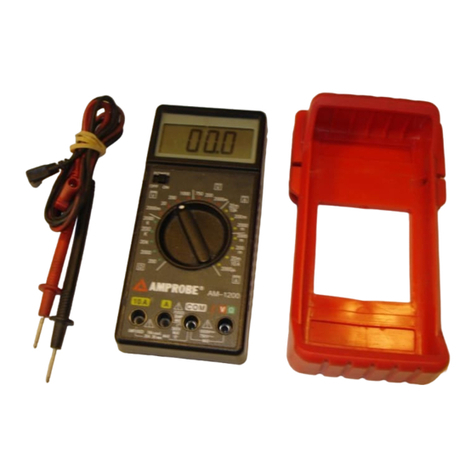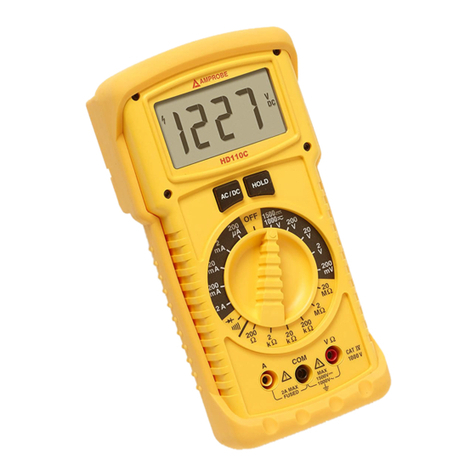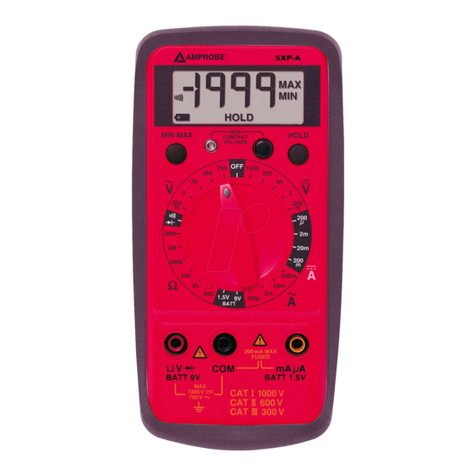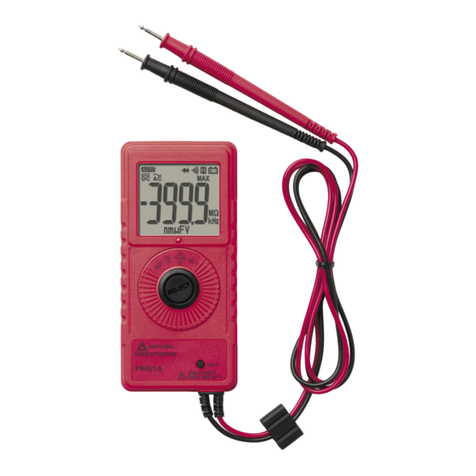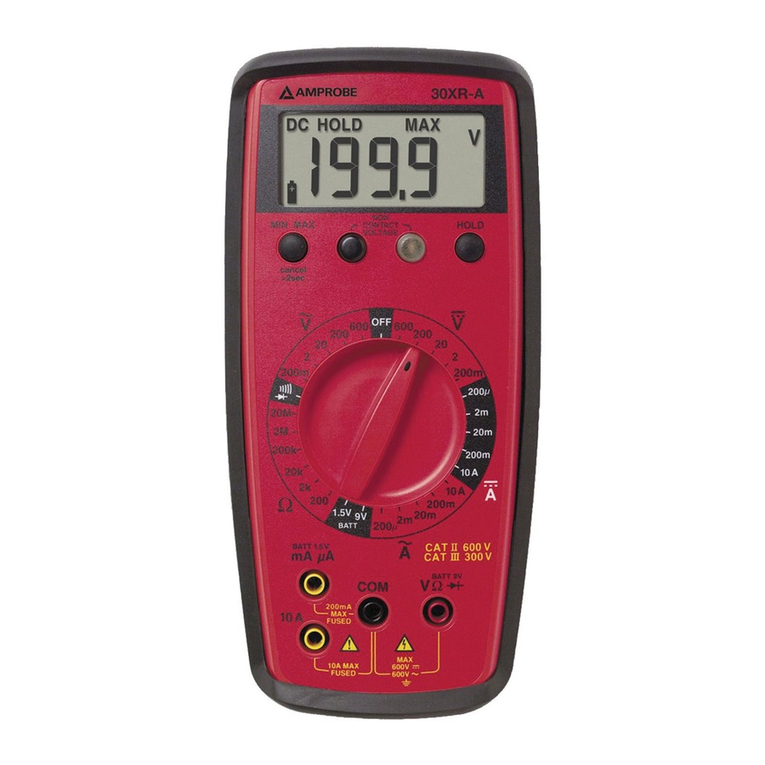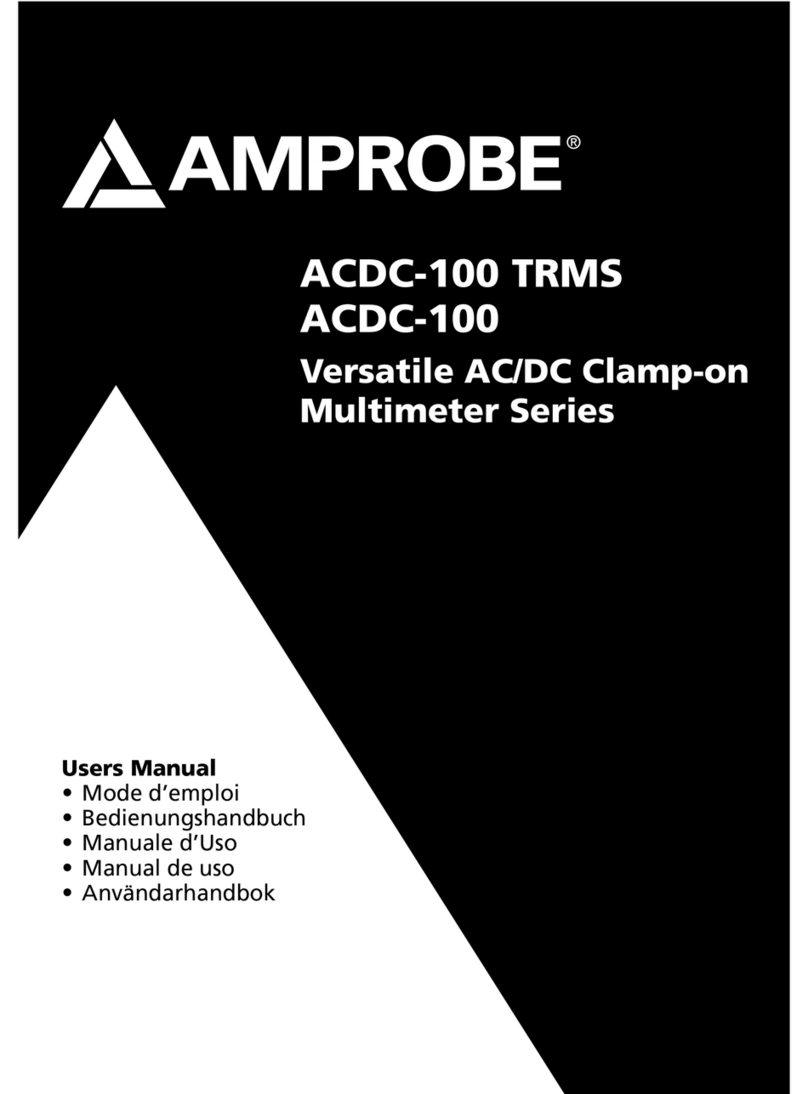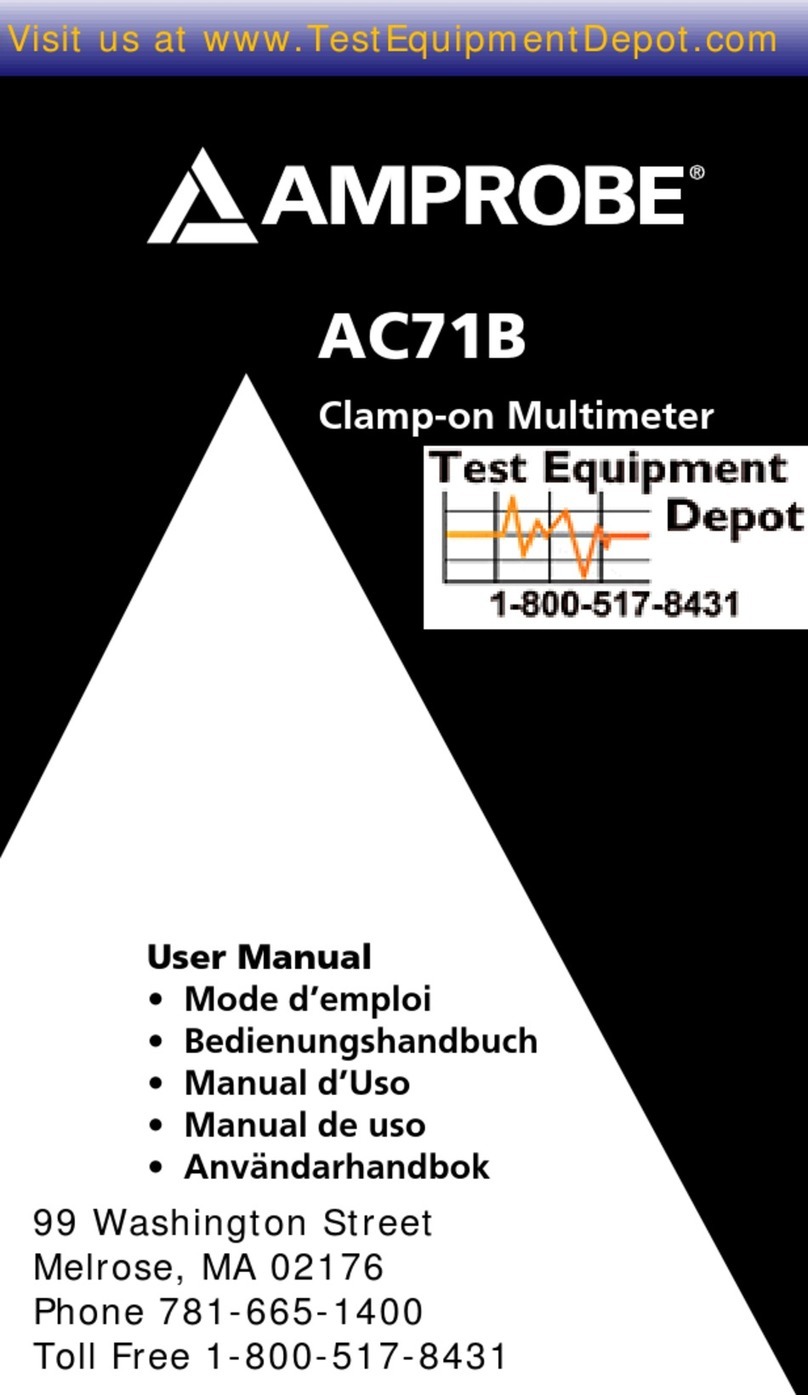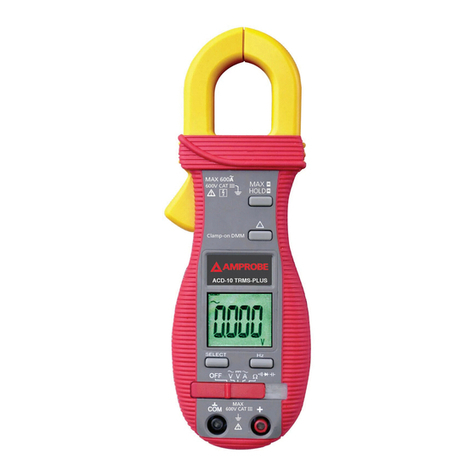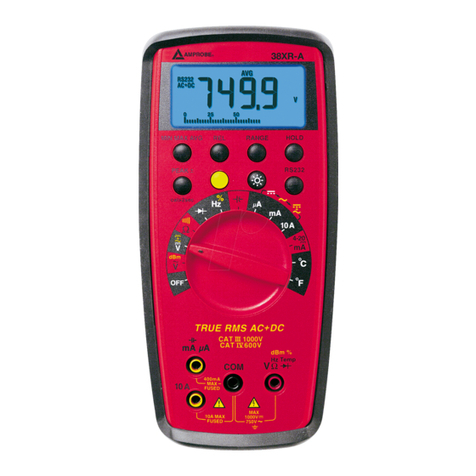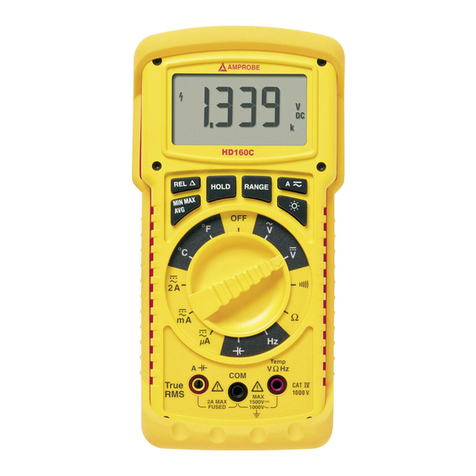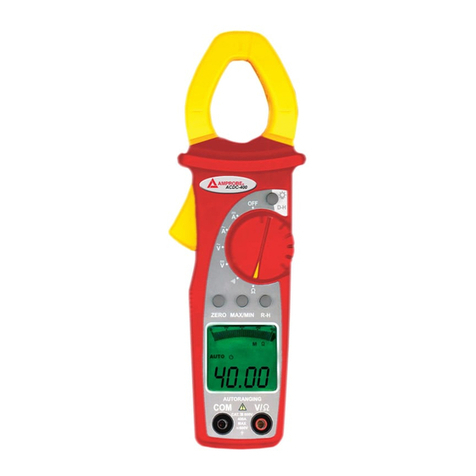
4
Measuring DC Voltage See Figure -1-
1. Set the Function Switch to @.
2. If RANGE is displayed, press the RANGE button to enable autoranging.
3. Connect the Test Leads: Red to , Black to COM
4. Connect the Test Probes to the circuit test points.
5. Read the display, and, if necessary, correct any overload (
) conditions.
Measuring AC Voltage (True rms) See Figure -2 - & -3-
See Additional Features to find out the advantages of true rms.
1. Set the Function Switch to &.
2. If RANGE is displayed, press the RANGE button to enable autoranging.
3. If dBm is displayed, press the yellow button to turn off dBm (enable &)
4. Connect the Test Leads: Red to , Black to COM
5. Connect the Test Probes to the circuit test points.
6. Read the display, and, if necessary, correct any overload (
) conditions.
Preparing for Current Measurements
xTurn off circuit power before connecting the test probes.
xAllow the meter to cool between measurements if current measurements
approach or exceeds 10 amps.
xA warning tone sounds if you connect a test lead to a current input before you
select a current function.
xOpen circuit voltage at the measurement point must not exceed 1000 V.
xAlways measure current in series with the load. Never measure current across a
voltage source.
Measuring DC Current See Figure -4-
1. Set the Function Switch to a current function, μA, mA, or 10A.
2. If the 10A function is not selected and RANGE is displayed, press the RANGE
button to enable autoranging.
3. Connect the Test Leads: Red to μA mA or 10A, Black to COM
4. Turn off power to the circuit being measured.
5. Open the test circuit (() to establish measurement points.
6. Connect the Test Probes in series with the load.
7. Turn on power to the circuit being measured.
8. Read the display, and, if necessary, correct any overload (
or -) conditions.
Measuring AC Current (True rms) See Figure -3- & -5-
See Additional Features to find out the advantages of true rms.
1. Set the Function Switch to a current function and range, μA, mA, or 10A.
2. If DC is displayed, press the yellow button to turn on AC.
3. If the μA or mA function is not selected and RANGE is displayed, press the
RANGE button to enable autoranging.
4. Connect the Test Leads: Red to μA mA or 10A, Black to COM
5. Turn off power to the circuit being measured.


